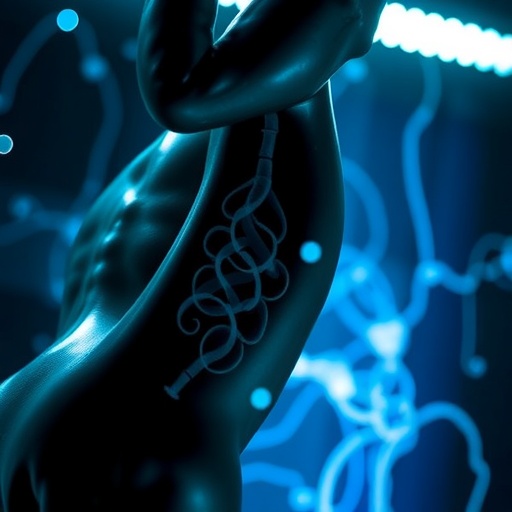Priapism is not just an uncommon medical condition; it is a complex and multifaceted phenomenon that has garnered significant attention within the fields of urology and general medicine. Characterized by an abnormal and protracted penile erection that occurs without any form of sexual arousal, priapism can lead to distressing complications if not addressed promptly. While the condition is rare, its implications are profound given its impact on sexual health and overall quality of life. Understanding the various subtypes of priapism, particularly ischaemic priapism, is crucial, as this form is most frequently encountered and is often linked with other underlying health conditions.
Ischaemic priapism, also known as low-flow or veno-occlusive priapism, is the most widely recognized subtype of this condition. The pathophysiology underlying ischaemic priapism is predominantly due to impaired venous drainage of the penis, which ultimately leads to prolonged engorgement of the penile tissues with blood. Various etiologies contribute to this impaired drainage, amongst which haematological disorders, particularly haemoglobinopathies like sickle cell disease, have been identified as significant precipitating factors. Patients with these conditions might present with painful, rigid erections that can last for hours, causing not only discomfort but potential long-term effects such as erectile dysfunction or penile necrosis if left untreated.
Antipsychotic medications represent another critical class of drugs that can instigate ischaemic priapism. The mechanism by which these medications induce an erection that cannot subside is intricate and suggests a possible influence on neurotransmitter pathways involved in erectile function. For individuals on antipsychotic therapies, the risk of priapism poses serious medical considerations, and healthcare providers must remain vigilant in monitoring for this adverse effect. Prompt recognition and intervention are paramount to preventing lasting damage.
In contrast, non-ischaemic priapism is characterized by high-flow or arterial blood flow to the penis, often resulting from trauma or injury that leads to the rupture of an artery within the corpora cavernosa. This subtype typically presents with a less painful and more prolonged erection, and in many cases, patients may not experience the same alarming symptoms as those with ischaemic priapism. This variation in presentation often results in delayed diagnosis, emphasizing the need for awareness of the condition’s different forms in both patients and healthcare providers.
Stuttering priapism, another subtype of this condition, represents a recurrent and episodic form of priapism that often follows a non-ischaemic presentation. The underlying mechanisms remain complex and are presumed to involve dysregulation of various biochemical pathways including nitric oxide signaling. It appears that many of the factors contributing to stuttering episodes are not as well understood, necessitating further research to elucidate how triggers interact with underlying pathophysiological mechanisms.
Clinical management of priapism demands a structured and methodical approach. The initial phase involves a detailed clinical history and physical examination, which along with a blood-gas analysis of the corpus cavernosum, can help differentiate between ischaemic and non-ischaemic types. This initial assessment is critical, as it informs subsequent management strategies. In cases where the diagnosis remains uncertain, advanced imaging techniques, such as Colour Doppler ultrasonography or magnetic resonance imaging (MRI) of the penis, can provide valuable insights into blood flow dynamics and venous drainage patterns.
Once diagnosed, management strategies for ischaemic priapism typically begin with conservative measures, including cavernosal blood aspiration combined with the instillation of an adrenergic agonist like phenylephrine. These interventions aim to restore normal blood flow and relieve the painful condition. Complications arise when these initial treatments are unsuccessful, necessitating more invasive procedures such as penile shunt surgery, ideally performed within the first 24 to 48 hours of presentation to avert permanent damage.
For chronic or recurrent cases where surgical interventions fail, the insertion of a penile prosthesis may be considered, particularly when priapism episodes exceed 36 to 48 hours. This represents a critical juncture in management, where the focus shifts from acute intervention to delivering a long-term solution to maintain erectile function—transforming a challenging clinical scenario into an opportunity for improved quality of life for the patient.
Non-ischaemic priapism typically responds to less aggressive interventions, especially when conservative management fails. In such cases, selective arterial embolization offers an efficient solution, particularly for patients who may not require more invasive surgical treatments. This technique involves the occlusion of the abnormal arterial flow to the corpora cavernosa and has shown promise in mitigating the symptoms of non-ischaemic priapism effectively.
The nuances of priapism management extend beyond immediate treatment. Ongoing investigations into the aetiology and underlying pathophysiology of the various priapism subtypes have significant implications for treatment strategies. New insights drawn from clinical observations and biochemical studies may shape future therapeutic interventions, providing healthcare professionals with an expanding arsenal for managing this complex condition.
As research continues to expand our understanding of priapism, it becomes increasingly evident that awareness, timely diagnosis, and individualized treatment plans are the cornerstones of effective management. Patients and practitioners alike must recognize the potential for this condition to impact sexual health profoundly, and thus foster a conversation that normalizes discussion around priapism and its management.
Ultimately, comprehensive patient education and awareness can yield positive outcomes, as patients who understand their condition are more likely to seek timely help. As we continue to uncover the layers of complexity surrounding priapism, the goal remains clear: to alleviate suffering and promote better health outcomes through informed and effective management strategies.
In conclusion, priapism, while often obscured by its rarity, stands as a compelling subject of medical inquiry that intertwines urgent intervention with ongoing research. The intricate pathways involved and the varied presentations of the condition highlight a critical need for continued exploration. Through a combination of established practices and innovative research, we strive not only to treat priapism effectively but also to provide a better quality of life for those affected.
Subject of Research: Priapism
Article Title: An update on mechanisms and treatment options for priapism
Article References:
Pang, K.H., Alnajjar, H.M., Lal, A. et al. An update on mechanisms and treatment options for priapism.
Nat Rev Urol (2025). https://doi.org/10.1038/s41585-025-01069-9
Image Credits: AI Generated
DOI: 10.1038/s41585-025-01069-9
Keywords: Priapism, Ischaemic Priapism, Non-Ischaemic Priapism, Stuttering Priapism, Urology, Erectile Dysfunction, Haemoglobinopathies, Antipsychotic Medications.
Tags: advances in priapism treatmenterectile dysfunction riskshaematological disorders and priapismischaemic priapism explainedlong-term effects of priapismlow-flow priapism causespenile health complicationsPriapism mechanismssickle cell disease and priapismunderstanding priapism subtypesurology and priapismveno-occlusive priapism risks





